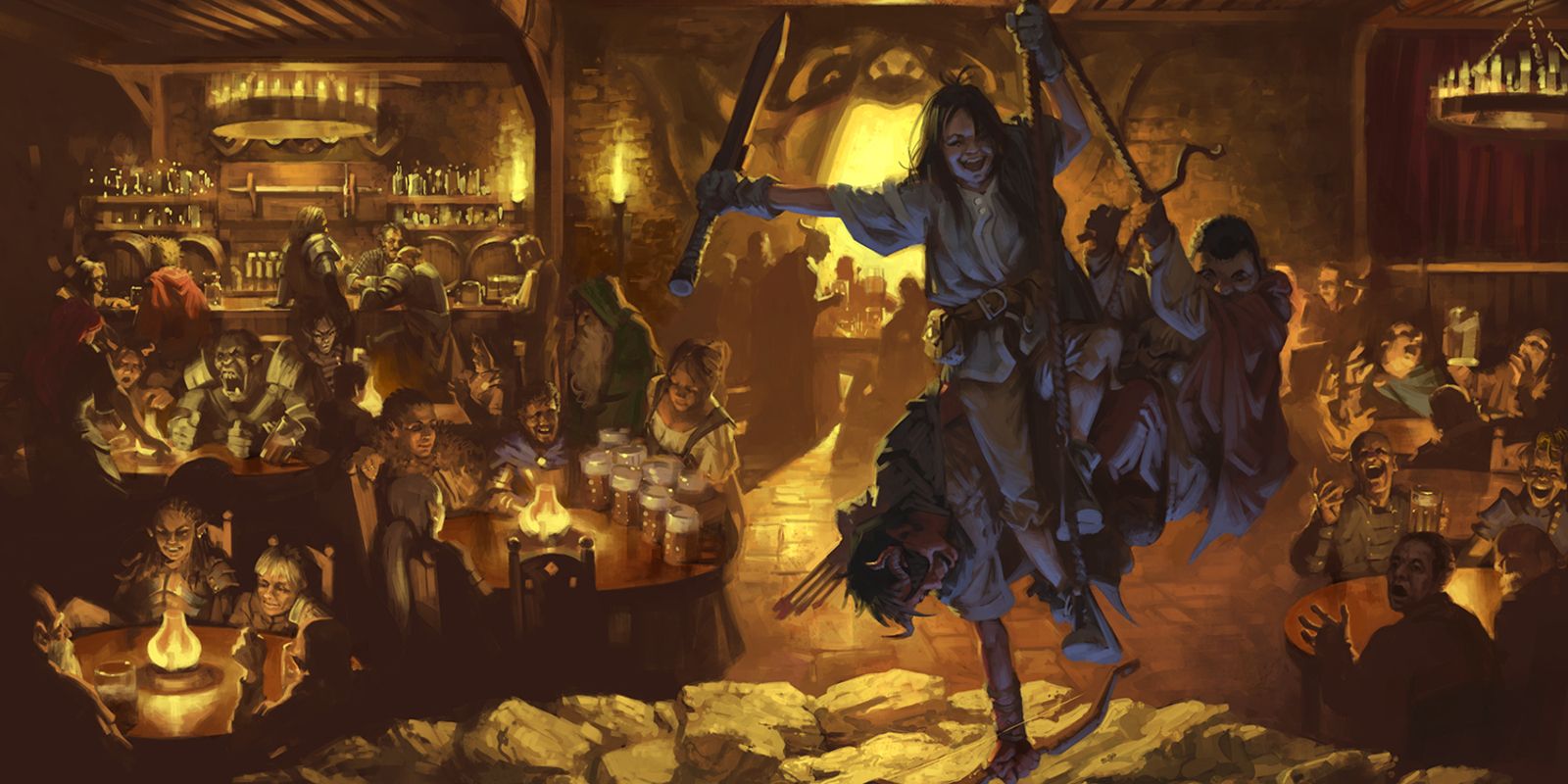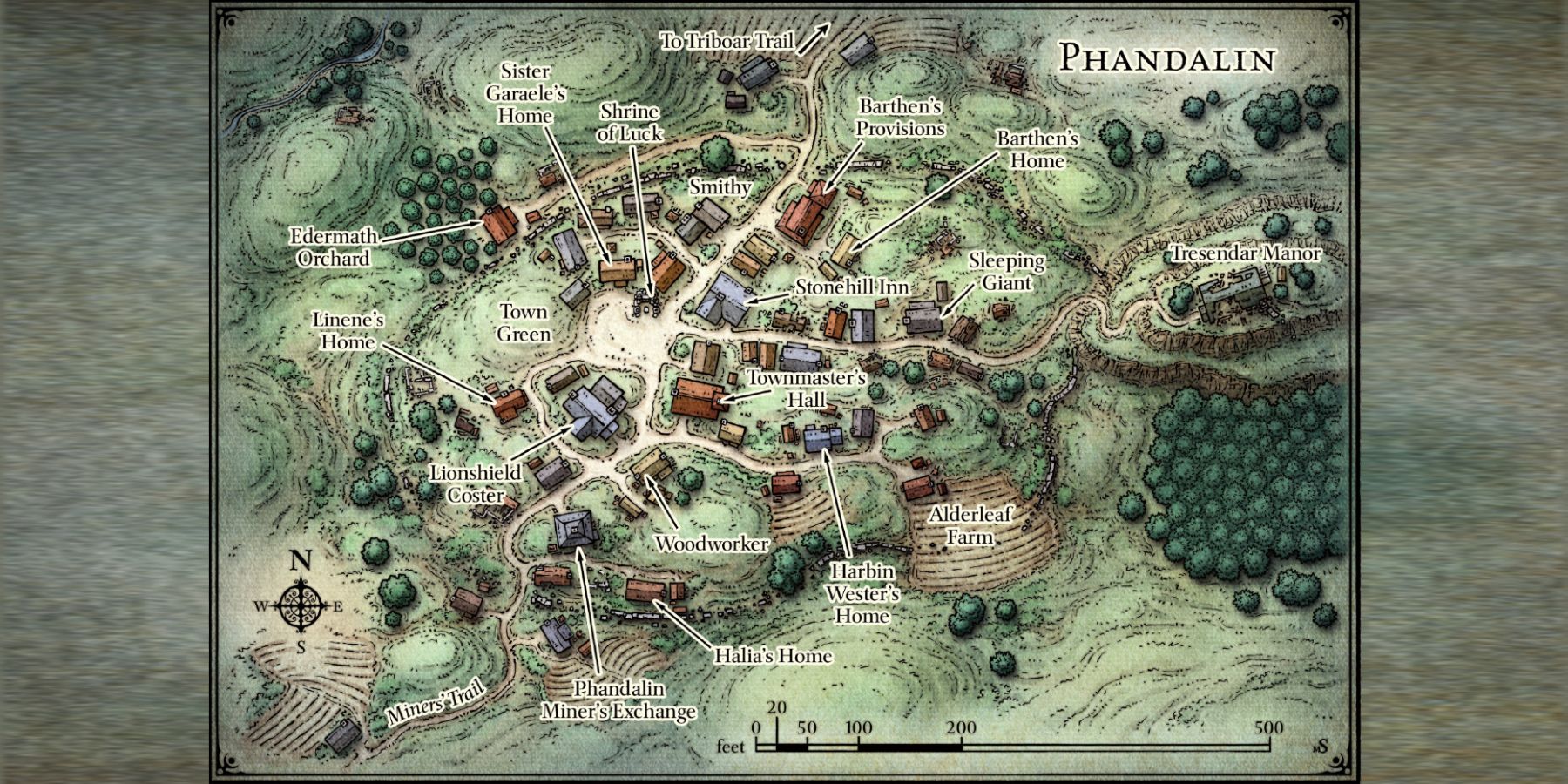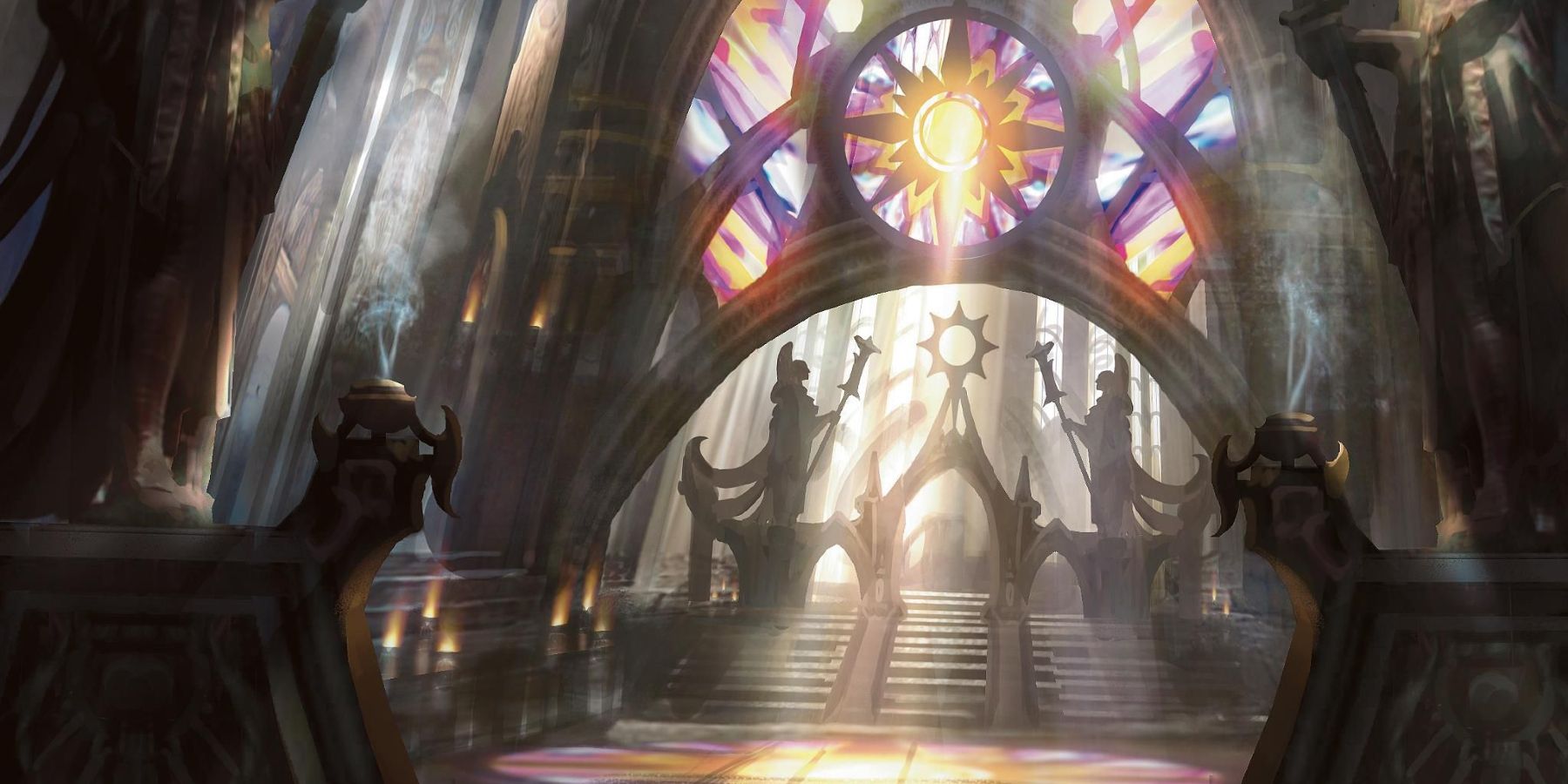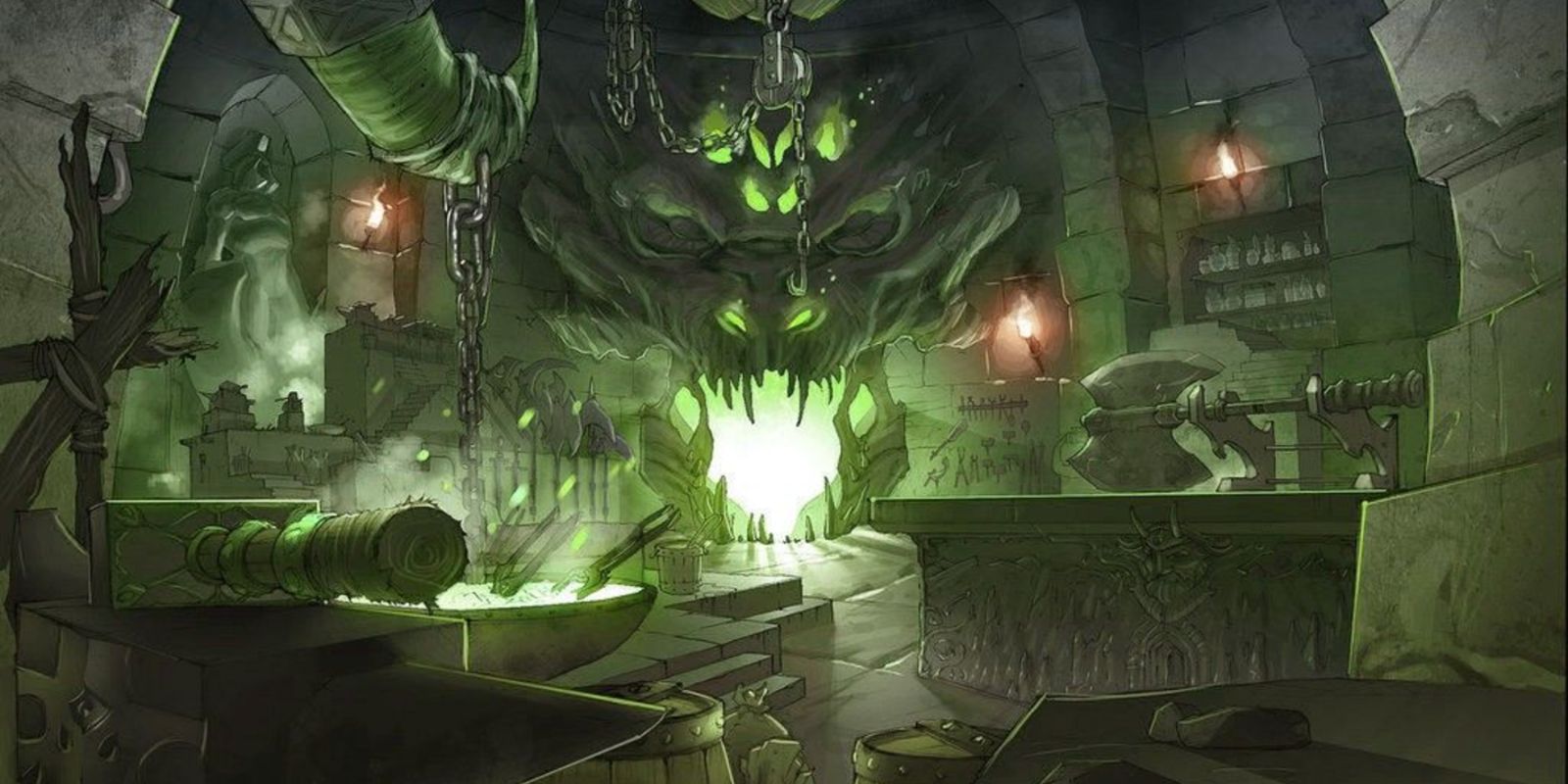All Dungeons & Dragons adventures need to start somewhere, and if you are a Game Master creating connected adventures in a consistent world (known as a campaign) that somewhere is often the humble first town. A good first town is a place between the action where your players can rest in (relative) peace, buy things with their hard earned treasure and find quests to get them into more adventures. Here are the essential landmarks and structures you'll want to include as you homebrew your very own first town.
Towns are big enough to be interesting but small enough to have lots of problems that lower level heroes are well-suited to solve. This isn't to say your campaign's starting area can't be whatever size you like, just that a bigger city has drawbacks, including decision paralysis, while smaller hamlets and villages don't lend themselves as well to narrative or intrigue. One good way to keep the scope of your game manageable for you and your players, especially as it begins, is to start small and grow from there. Even if you have ideas for an entire world, building a town and working your way out from there is a great way to start.
The tavern is an incredibly useful local landmark you'll want to include in any town. Also known as the public house (or the inn if the place has beds), the tavern is a space for the player characters to get sloshed and take long rests while they are in town. The tavern can simply be where the heroes heal after a long day's adventuring but because the entire town presumably drinks here it can also be center stage for story development, picking up quests and even fighting combats.
A good tavern should represent the core of the town's community and between the food, drink, decor and patrons, the players should be able to infer a lot about what's going on in the game world. There should be an owner (usually a family), a few employees and something that allows the player characters (PCs) to interact with the locals (like a game, music or fighting pit) to help get them invested. This is the place the PCs will be getting the most facetime with the townsfolk, and the more invested they are, the more they will care when they need to save the Mayor's son from kobolds or whatever later on. In many settings, taverns are the known hangouts of professional explorers, travelers and monster hunters, so any NPCs with dirty work to get done might show up too.
Most towns will have several shops so make sure you include at least one or two that your players will specifically want to visit. This means some shops should be tailored to their needs: offering arms and armor at the blacksmith or leathersmith, spell scrolls and magic identification from a wizard's tower or simple resupplies like a trader's post or general store. The longer the PCs stay in the starting town, the more they will shape and invest in its economy. A business the entire party might be interested in might need the medieval truckers known as carters. Carters gather the town's goods, caravan them to the next town and then trade for the items the hometown needs. If implemented in D&D, carters can attract the players as they sell exotic goods, make requests for items or accompany the cart on escort quests into dangerous lands.
The temple is where townsfolk go to pray, gain a sense of community and receive a smug sense of superiority over others. The temple will have clergy who work there, flavored by the god or pantheon they worship -- a god of strength might have brawny extroverted priests that are one step away from starting their own gym, while a god of knowledge might have a temple akin to a public library. The higher ranked members of the temple are likely clerics or other divine classes that can cast a few beneficial spells for the players -- if you want your town to have a source for the healing potion addiction your players are feeding, this is the ideal spot for that.
RELATED: Dungeons & Dragons: 10 Best Warlock Sub-Classes to Play As
Temples can also be places of intrigue in their own right depending on how devout the citizens are and how the clergy interact with local politics. Regardless, there should be some issue that the church finds important that you can use to sow tension into the setting and even provide quests for the players. If gods and religions don't factor heavily into your setting, think of where the citizens might go for these services instead -- the temple could also take the form of a fortune teller's hut or a druid's orchard. These other mystic locales can also co-exist with the temple, which can in turn create some fun tension if the groups become rivals.
A "danger zone" is an area of town that is less civilized and more dangerous than the rest. Examples of danger zones include the rat-infested sewer beneath town, a haunted boneyard or an alchemist's garden of giant carnivorous plants. The danger zone serves as a reminder to players that the veneer of safety provided by the town is shallow and that even here among civilization there is need for heroes. These are areas that players might travel through as a shortcut or act as quest destinations themselves. Danger zones account for many PCs first adventure but have lower stakes than other dungeons because the areas are still technically inside the safety of town. These make ideal places to run a practice combat for players to familiarize with their characters and they can always lead to more serious adventures down the road (what is below those rat sewers? maybe a massive dungeon!)
Forming a few ideas for taverns, temples, shops and dangers should be all you need to get started creating your D&D game's first town. There are libraries of material out there to help you get started but the D&D 5E Starter Set's Phandalin, the village of Hommlet from Temple of Elemental Evil and the town of Sandpoint from Pathfinder's Rise of the Runelords campaign all make excellent starting towns with plenty of the details done for you. You should feel empowered to take whatever you find interesting and discard the rest. No matter what you decide for your starting town, your ideas are valid and there really is no wrong answer. Happy homebrewing!




